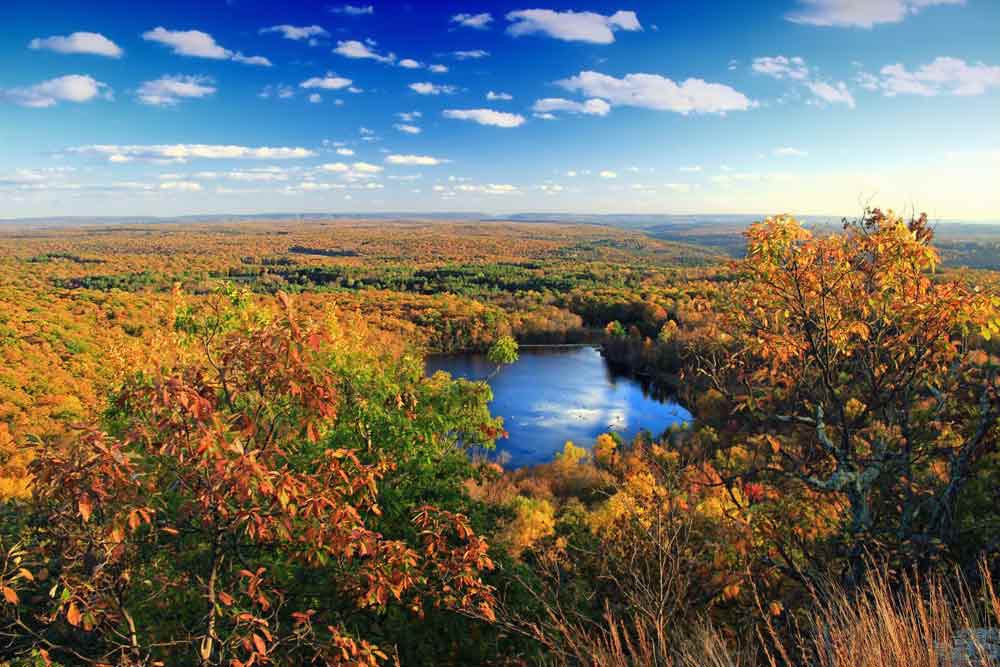30 interesting facts about the Appalachian Mountains
Undoubtedly, interesting facts about the Appalachian mountains give us a lot of fun and learning. The Appalachian Highlands physiographic division is divided into thirteen provinces by the United States Geological Survey (USGS), interesting facts about the Appalachian mountains:
Atlantic Coast Uplands, Eastern Newfoundland Atlantic, Maritime Acadian Highlands, Maritime Plain, Notre Dame and Mégantic Mountains, Western Newfoundland Mountains, Piedmont, Blue Ridge, Valley and Ridge, Saint Lawrence Valley, Appalachian Plateaus, and Newfoundland Highlands. The Adirondack Mountains are not part of the Appalachians.
The Adirondacks are part of the Canadian Shield and are part of the Grenville Orogeny; they are a separate range from the Appalachians that is expanding as one of the interesting facts about the Appalachian region.
The mountain range is primarily in the United States (US), but it also extends into southeastern Canada, forming a zone that stretches from the island of Newfoundland 1,500 miles (2,400 kilometers) southwestward to Central Alabama in the US. Parts of the islands of Saint Pierre and Miquelon, which are part of France’s overseas territory, are included in the range.
The system is split into many ranges, with individual mountains averaging approximately 3,000 feet in elevation (910 m). Mount Mitchell in North Carolina, which stands at 6,684 feet (2,037 meters) and is the highest peak east of the Mississippi River, is the tallest of the group. Let’s find below 30 interesting facts about the Appalachian Mountains!
Interesting facts about the Appalachian Mountains
Keep going below for the 30 interesting facts about the Appalachian Mountains
1. The Appalachian Mountains are around 3,000 feet high on average.
2. Only in the late 1800s did the term “Appalachian Mountains” become widespread.
3. Before the nineteenth century, the name for the mountain range was “Allegheny Mountains.”
4. Parts of the islands of Saint Pierre and Miquelon, which are part of France’s overseas territory, are also covered by the mountain range.
5. The Appalachian Mountains are around 3,000 feet tall on average.
6. The word “Appalachian Mountains” wasn’t coined until the late 1800s.
Before the nineteenth century, the mountain range was known as the “Allegheny Mountains.”
7. Mount Washington is another well-known Appalachian mountain.
8. The Appalachians do not include the Adirondack Mountains.
9. The Appalachian mountain range stretches for 2,575 kilometers.
10. The mountain was formed more than 450 million years ago during the Ordovician Period.
11. The Appalachians are North America’s most ancient mountain range.
12. The “Apalachees,” a Native American tribe who resided in the area, gave the Appalachians its name.
13. Before natural deterioration, the Appalachians were on par with the Rockies and the Alps in terms of height.
14. Mount Mitchell is the tallest mountain in the Appalachian range, standing at 6,684 feet.
15. The Appalachian area serves as a natural boundary.
16. Mount Mitchell is a mountain in Yancey County, North Carolina.
17. In eastern North America, the Appalachians are a mountain range.
18. The Appalachian Trail has previously been “conquered” by many walkers.
19. The range originally included the Ouachita Mountains in Arkansas and Oklahoma.
20. The Appalachian Mountains are divided into thirteen distinct areas.
21. From the New River, the Appalachian mountain range stretches southward.
22. The center part of the Appalachian Mountains begins in the Hudson Valley.
23. The northern portion of the Appalachian Mountains begins in the Canadian province of Ontario.
24. The Appalachian Mountains include the Great Smoky Mountains, which are a subrange of the Appalachian Mountains.
25. Every year, more than 12 million people visit the Great Smoky Mountains National Park.
26. Anthracite and bituminous coal are abundant in the Appalachian Mountains.
27. Petroleum was first discovered in the Appalachians in 1859.
28. The Appalachians are largely made up of deciduous broad-leaf trees and evergreen needle-leaf conifers, but they also include the evergreen broad-leaf American holly (Ilex opaca) and the deciduous needle-leaf conifer tamarack (or eastern larch) (Larix laricina).
29. The red spruce (Picea rubens) is the most common northern and high-elevation conifer, growing from near sea level to about 4,000 feet (1,200 meters) above sea level (asl) in northern New England and southern Canada.
30. The Appalachian woods are home to five different kinds of tree squirrels. The eastern gray squirrel, which may be found at low to moderate elevations, is the most common.
We hope you have enjoyed these interesting facts about the Appalachian mountains!
More Interesting Articles
- 25 Awesome Lake Tahoe Things to Do in Weekend
- 7 Awesome Places for Thrilling Lake Tahoe Skiing
- Top 10 Stunning Lake Tahoe Beaches to Visit
- To Do in Glen Canyon National Recreation Area
- Glen Canyon National Park Travel Guide
- 17 Travel Attractions of the Lake Tahoe City
- 32 Cozy Lake Tahoe Hotels, Resorts, and Lodges
- Top 10 Natural Wonders of the US to See in Life
- 11 To-Do while Traveling Lake Tahoe in Summer
- Monument Valley Tours – How to Plan
- 40 Monument Valley Facts Everyone Should Know
- 6 Places for Thrilling Monument Valley Camping
- List of Monument Valley Hotel You can Check
- 13 Memorable Things to Do in Monument Valley
- Grand Canyon National Park Travel Guide
- Monument Valley Transportation Guide
- Monument Valley Visitor Center
- Southeastern Utah Sights – Must-See Sights in Utah
- Monument Valley Scenic Drive – A Complete Guide
- 10 Beautiful Utah National and State Parks

